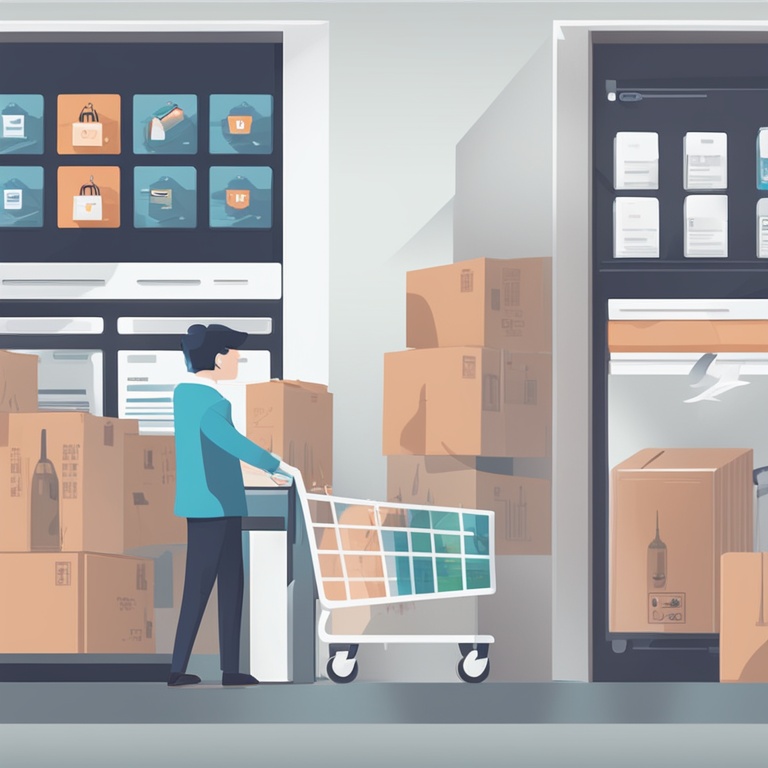

In the dynamic realm of cross-border e-commerce, the management of return policies has emerged as a critical factor that can significantly impact customer satisfaction, brand reputation, and ultimately, business success. With the rapid advancements in technology, artificial intelligence (AI) tools have presented themselves as powerful allies in optimizing these return policies. This blog post will delve into the various ways in which e-commerce businesses can harness the capabilities of AI tools to enhance their cross-border return policies.
Understanding the Challenges of Cross-Border E-commerce Returns
Cross-border e-commerce returns pose a unique set of challenges compared to domestic returns. Firstly, there are complex logistical issues involved. Shipping products back across international borders can be time-consuming, costly, and subject to various customs regulations and potential delays. For example, a customer in Europe returning a product purchased from a US-based e-commerce store may face difficulties in finding an affordable and reliable shipping method that complies with both EU and US customs requirements.
Secondly, there are cultural differences that come into play. Different cultures have varying expectations regarding return policies. In some cultures, customers may be more lenient and understanding, while in others, they may expect a highly flexible and hassle-free return process. For instance, customers in Asian markets might place a high value on quick resolution of return issues, whereas those in Western markets may prioritize clear communication about the return steps.
Thirdly, the issue of cost management is crucial. E-commerce businesses need to balance the cost of providing convenient return options with maintaining profitability. Returning products across borders often incurs additional expenses such as international shipping fees, customs duties, and potential restocking fees. If not managed properly, these costs can eat into the business's margins.
The Role of AI Tools in Addressing These Challenges
AI tools offer a range of capabilities that can help e-commerce businesses overcome the challenges associated with cross-border returns. One of the key applications is in predictive analytics. By analyzing historical data on returns, including factors such as product categories, customer locations, and reasons for return, AI algorithms can predict the likelihood of future returns. For example, if a particular product has a consistently high return rate in a specific country or region, the AI system can flag this for the business to take proactive measures such as improving the product description or quality control.
Another important role of AI is in customer service optimization. Chatbots powered by AI can handle initial inquiries from customers regarding returns. These chatbots can provide instant responses, guiding customers through the return process, answering common questions about shipping options, refund timelines, and any necessary documentation. This not only improves the customer experience by providing quick assistance but also reduces the workload on human customer service representatives, allowing them to focus on more complex issues.
AI can also assist in cost management. Through machine learning algorithms, AI can analyze different return scenarios and identify the most cost-effective ways to handle returns. For instance, it can determine whether it is more economical to offer a partial refund and allow the customer to keep the product in cases where the cost of return shipping is prohibitively high. Additionally, AI can help in optimizing inventory management related to returns by predicting which returned products are likely to be resold quickly and which may need to be disposed of or refurbished.
Implementing AI Tools for Return Policy Optimization
The first step in implementing AI tools for return policy optimization is to identify the specific needs and pain points of the business. This could involve conducting a thorough analysis of current return processes, gathering feedback from customers and customer service teams, and identifying areas where improvements are most needed. For example, if customers frequently complain about the lack of clarity in the return instructions, then an AI-powered chatbot that can provide detailed and easy-to-understand guidance may be a priority.
Once the needs are identified, the next step is to select the appropriate AI tools. There are numerous AI platforms and software available in the market, each offering different features and capabilities. Some may be more focused on predictive analytics, while others may excel in customer service automation. It is important to evaluate these options carefully based on the identified needs. For instance, if cost management is a major concern, a tool that offers advanced cost analysis and optimization features would be more suitable.
After selecting the AI tools, integration with existing e-commerce systems is crucial. This ensures seamless communication between the AI applications and the business's order management, inventory management, and customer service systems. For example, when a customer initiates a return request through the e-commerce website, the information should be immediately transmitted to the AI-powered chatbot or predictive analytics system for appropriate processing.
Training the AI system is also an essential step. AI algorithms learn from data, so it is necessary to provide them with relevant and accurate data to ensure optimal performance. This could involve uploading historical return data, customer profiles, and product information. The more comprehensive and detailed the data, the better the AI system will be able to analyze and predict return scenarios accurately.
Case Studies of Successful AI-Enabled Return Policy Optimization
Let's take a look at some real-world examples of e-commerce businesses that have successfully leveraged AI tools to optimize their cross-border return policies. Company A, a global fashion e-commerce retailer, was facing challenges with high return rates in certain international markets. By implementing an AI-powered predictive analytics system, they were able to identify the root causes of these returns. It turned out that the sizing information on their website was not accurately translating to different body types in some regions. Armed with this knowledge, they updated their product descriptions and sizing charts, resulting in a significant reduction in return rates.
Company B, an electronics e-commerce store, used an AI-powered chatbot to handle return inquiries. The chatbot was able to provide instant responses to customers' questions about return procedures, shipping options, and refund timelines. As a result, customer satisfaction with the return process increased by 30%, and the workload on their human customer service representatives was reduced by 40%.
Company C, a home decor e-commerce business, utilized AI for cost management in relation to returns. The AI system analyzed different return scenarios and determined the most cost-effective ways to handle returns. For example, in cases where the cost of return shipping was high, it recommended offering a partial refund and allowing the customer to keep the product. This strategy helped the company save on return shipping costs while still maintaining good customer relations.
Overcoming Potential Obstacles in AI Implementation
While the benefits of using AI tools for return policy optimization are clear, there are also some potential obstacles that businesses may face during implementation. One of the main challenges is data privacy and security. AI systems rely on large amounts of data, including customer information, return histories, and product details. Ensuring that this data is protected from unauthorized access, breaches, and misuse is of utmost importance. E-commerce businesses need to implement robust security measures such as encryption, access controls, and regular data audits to safeguard the integrity of the data used by AI applications.
Another obstacle is the need for technical expertise. Implementing AI tools often requires a certain level of technical knowledge and skills within the organization. This may involve understanding how to integrate the AI software with existing e-commerce systems, training the AI system, and troubleshooting any technical issues that may arise. Businesses may need to invest in training their staff or hiring external experts to overcome this hurdle.
There is also the issue of resistance to change within the organization. Some employees may be hesitant to adopt new AI-powered processes, fearing job losses or a steep learning curve. To address this, it is important to communicate the benefits of AI implementation clearly to all stakeholders. This could include highlighting how AI can enhance their work efficiency, improve customer satisfaction, and ultimately contribute to the overall success of the business.
Future Trends in AI-Enabled Cross-Border E-commerce Return Policies
Looking ahead, there are several exciting trends that are likely to shape the future of AI-enabled cross-border e-commerce return policies. One such trend is the increasing use of AI in personalized return experiences. AI algorithms will be able to analyze individual customer preferences, purchase histories, and return behaviors to offer customized return options. For example, a frequent customer who has always been prompt in returning products may be offered a more streamlined and preferential return process.
Another trend is the integration of AI with emerging technologies such as blockchain. Blockchain can provide enhanced security and transparency in the return process. For instance, it can be used to track the movement of returned products across borders, ensuring that all parties involved have a clear and immutable record of the return journey. This can help in reducing disputes and improving trust between e-commerce businesses and their customers.
The development of more advanced AI-powered virtual assistants is also on the horizon. These virtual assistants will be able to handle more complex return scenarios, providing in-depth advice and guidance to customers. They may even be able to negotiate with customers on behalf of the e-commerce business to find mutually agreeable return solutions.
In conclusion, the optimization of cross-border e-commerce return policies with AI tools is a promising avenue for e-commerce businesses to enhance customer satisfaction, manage costs, and improve overall business performance. While there are challenges to overcome in the implementation process, the potential rewards are significant. By staying abreast of the latest trends and leveraging the capabilities of AI, e-commerce businesses can position themselves for success in the highly competitive global e-commerce landscape.